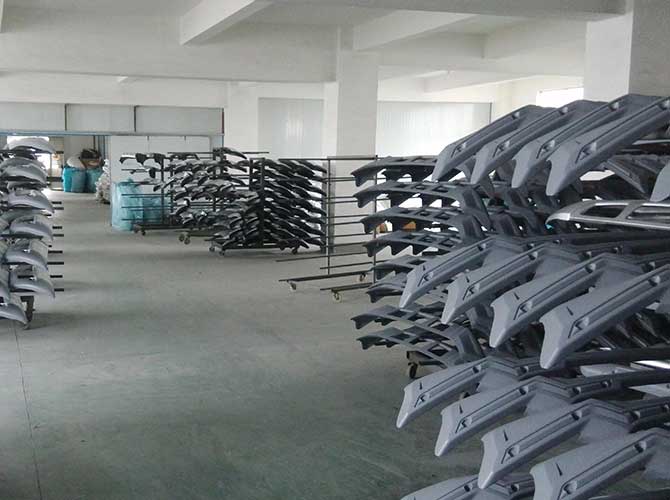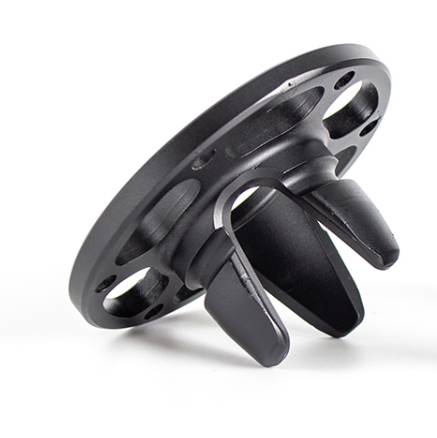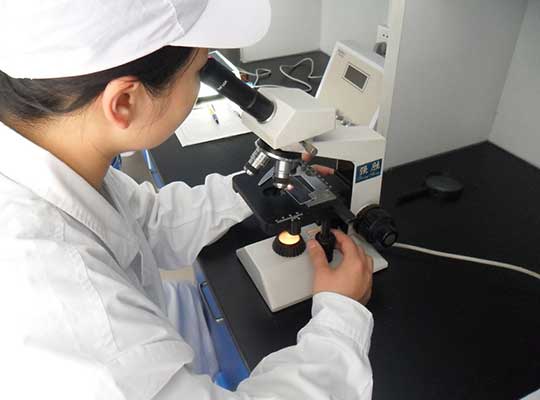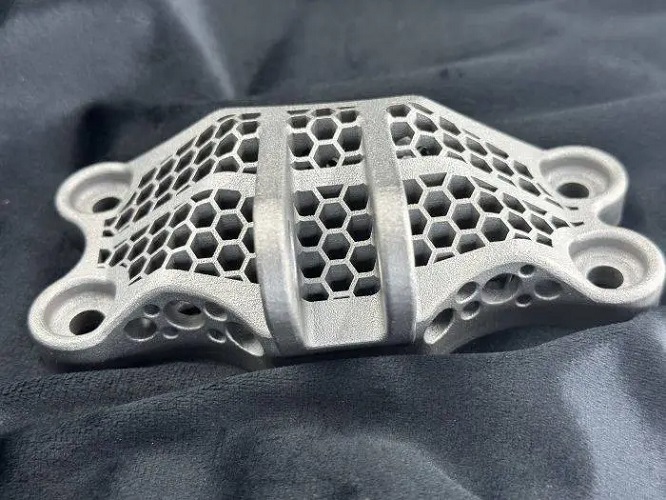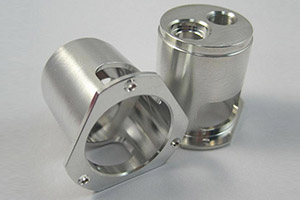In the world of product development, turning a concept into a tangible reality requires a crucial step that bridges imagination and production: prototype making. Whether you’re an aspiring inventor, a product designer, or a manufacturing professional, understanding what prototype making entails is essential for creating successful products. This guide will walk you through everything you need to know about prototype making, from its definition and importance to its step-by-step process and key considerations.
Defining Prototype Making: From Concept to Tangible Model
Pada terasnya, prototype making is the process of transforming raw materials into functional or visual models based on design drawings, 3D models, or specific physical requirements. These prototypes serve as physical representations of a product idea, allowing designers, jurutera, and stakeholders to visualize, test, and refine the concept before moving to mass production.
Unlike the final product, which is manufactured in large quantities, a prototype is typically a one-of-a-kind or small-batch model created to validate the feasibility and practicality of a design. It helps answer critical questions: Does the design work as intended? Is the structure stable? Does the appearance meet customer expectations? By addressing these questions early, prototype making saves time, wang, and frustration in later stages of product development.
Prototype making isn’t limited to a single industry or product type. It’s used across various fields, including consumer electronics, Automotif, Peranti perubatan, Aeroangkasa, and even furniture design. From a simple plastic casing for a new gadget to a complex mechanical component for an industrial machine, prototype making brings all kinds of designs to life.
The Importance of Prototype Making in Product Development
You might wonder why prototype making is such a vital step in product development. After all, with advanced computer simulations and 3D modeling software, can’t we just skip straight to production? Kebenaran adalah, while digital tools are invaluable, nothing replaces the insights gained from holding a physical prototype in your hands.
First and foremost, prototype making allows for Pengesahan reka bentuk. A 3D model on a screen might look perfect, but a physical prototype can reveal flaws that digital simulations miss—like unexpected weight distribution, poor ergonomics, or parts that don’t fit together properly. Contohnya, a prototype of a new kitchen tool can help designers realize that the handle is uncomfortable to grip, a problem that might not be obvious in a digital model.
Second, prototypes facilitate ujian fungsional. They let engineers and designers test how the product performs under real-world conditions. Will a new medical device withstand repeated sterilization? Does a new toy meet safety standards when dropped? These questions can only be answered by testing a physical prototype.
Third, prototype making enables stakeholder communication. Whether you’re presenting your idea to investors, pelanggan, or team members, a physical prototype makes the concept tangible and easier to understand. It sparks more productive feedback and helps build confidence in the design.
Akhirnya, prototype making helps reduce production risks. By identifying and fixing issues early, anda mengelakkan kesilapan yang mahal dalam pengeluaran besar -besaran. Bayangkan melabur dalam acuan mahal untuk membentuk suntikan hanya untuk menemui kecacatan reka bentuk -ini dapat menetapkan projek anda kembali bulan dan menelan belanja ribuan dolar. Membuat prototaip membantu anda menangkap isu -isu ini di hadapan.
Langkah demi langkah: Proses membuat prototaip
Pembuatan prototaip adalah proses berstruktur yang melibatkan beberapa langkah utama, Setiap bangunan pada yang sebelumnya untuk memastikan prototaip akhir memenuhi semua keperluan. Mari kita memecahkan proses langkah demi langkah.
Langkah 1: Prepare Design Drawings and Define Requirements
The first step in prototype making is to create detailed design drawings and clearly define the prototype’s requirements. This phase lays the foundation for the entire process, so attention to detail is crucial.
Design drawings should include precise dimensions, material specifications, structural details, and any special features or functions the prototype needs to have. These drawings can be created using CAD (Reka bentuk bantuan komputer) perisian, which allows for accurate measurements and easy modifications. Popular CAD tools include AutoCAD, Solidworks, and Fusion 360.
In addition to drawings, you’ll need to define the prototype’s purpose. Is it a visual prototype meant to showcase the product’s appearance? A functional prototype to test how it works? Or a engineering prototype to validate structural integrity? The purpose will influence everything from material choice to manufacturing method.
It’s also important to involve all stakeholders in this step. Engineers, pereka, marketing teams, and even potential users can provide valuable input to ensure the requirements are clear and comprehensive.
Langkah 2: Choose the Right Materials for Your Prototype
Once the design and requirements are finalized, the next step is selecting the right materials. The choice of material depends on several factors, including the prototype’s purpose, expected use, and budget.
Common materials used in prototype making include:
- Plastik: Abs, PLA, PVC, and nylon are popular choices due to their affordability, ease of machining, and versatility. Abs, contohnya, is impact-resistant and often used for consumer product prototypes. PLA, a biodegradable plastic, is ideal for visual prototypes created with 3D printing.
- Logam: Aluminium, keluli, tembaga, and titanium are used for prototypes that require strength, ketahanan, or heat resistance. Aluminum is lightweight and easy to machine, making it a good choice for aerospace or automotive prototypes. Steel is stronger but heavier, suitable for industrial components.
- Wood: Plywood and hardwoods are sometimes used for early-stage prototypes, especially for furniture or large structural components, due to their low cost and ease of manipulation.
- Composites: Materials like carbon fiber or fiberglass composites offer a balance of strength and lightweight properties, making them suitable for high-performance prototypes in industries like sports equipment or aerospace.
When choosing materials, consider not only the prototype’s function but also how it will be manufactured. Some materials are easier to machine with CNC tools, while others are better suited for 3D printing or laser cutting.
| Jenis Bahan | Terbaik untuk | Manufacturing Methods | Kelebihan utama |
| Plastik abs | Prototaip fungsional, consumer products | Pemesinan CNC, 3D Percetakan | Tahan terhadap kesan, Mudah untuk mesin, cost-effective |
| PLA Plastic | Prototaip visual, concept models | 3D Percetakan | Biodegradable, kos rendah, smooth finish |
| Aluminium | Structural prototypes, aerospace parts | Pemesinan CNC, laser cutting | Ringan, strong, good heat conductivity |
| Steel | Industrial components, high-strength parts | Pemesinan CNC, kimpalan | High durability, Pakai rintangan |
| Wood | Prototaip peringkat awal, furniture | Laser cutting, hand tools | Kos rendah, easy to modify |
Langkah 3: Modeling and Design Refinement
With materials selected, it’s time to move on to modeling and design refinement. This step involves creating a detailed digital model or physical mockup of the prototype and making adjustments to ensure it meets all requirements.
For digital modeling, CAD software is essential. Designers use CAD to create precise 3D models that include all dimensions and features. These models can be tested virtually for things like structural integrity using finite element analysis (FEA) perisian, which simulates how the prototype will behave under different conditions.
If you’re creating a physical mockup, you might start with a rough version using inexpensive materials like foam or cardboard to get a sense of size and shape. This is especially useful for ergonomic designs, where 手感 (hand feel) is important.
During this step, it’s common to make several iterations of the model. Contohnya, you might adjust the thickness of a part to improve strength or modify the shape to enhance ergonomics. The goal is to refine the design until it’s ready for manufacturing.
Langkah 4: Processing and Assembly
Setelah reka bentuk dimuktamadkan, it’s time to manufacture the prototype. This step involves using various tools and equipment to shape the raw materials into the desired form, then assembling the components.
The manufacturing method depends on the material, design complexity, and prototype purpose. Common methods include:
- Pemesinan CNC: Uses computer-controlled machines to cut, drill, and shape materials with high precision. Ideal for metal and plastic prototypes with complex geometries.
- 3D Percetakan: Builds the prototype layer by layer using materials like PLA or ABS. Great for complex designs and quick turnaround times.
- Laser Cutting: Uses a high-powered laser to cut materials like wood, plastik, or metal with precision. Suitable for flat or simple 3D shapes.
- Manual Fabrication: Involves hand tools like saws, latihan, and sanders for simple prototypes or when specialized equipment isn’t available.
After individual parts are manufactured, they’re assembled to create the final prototype. This might involve using screws, adhesives, or other fasteners. During assembly, designers often discover issues like parts that don’t fit together properly, which can be addressed before final testing.
Langkah 5: Testing and Acceptance
The final step in prototype making is testing and acceptance. This is where you verify that the prototype meets all design requirements and functions as intended.
Testing can include several types:
- Dimensional Testing: Using tools like calipers, micrometers, or coordinate measuring machines (CMMs) Untuk memastikan prototaip sepadan dengan dimensi lukisan reka bentuk.
- Ujian fungsional: Menguji seberapa baik prototaip melaksanakan fungsi yang dimaksudkan. Contohnya, Prototaip kunci pintu baru akan diuji untuk memudahkan penggunaan, keselamatan, dan ketahanan.
- Ujian struktur: Memeriksa kekuatan dan kestabilan prototaip, yang mungkin melibatkan ujian tekanan atau ujian kesan.
- Ujian pengguna: Mempunyai pengguna berpotensi berinteraksi dengan prototaip untuk mengumpulkan maklum balas mengenai kebolehgunaan, keselesaan, dan penampilan.
Berdasarkan hasil ujian, anda mungkin perlu membuat pelarasan akhir pada prototaip. Once all issues are resolved and the prototype meets all requirements, it’s accepted, and you can move forward with the next stages of product development, whether that’s creating a more refined prototype or proceeding to mass production.
Key Considerations in Prototype Making
While following the step-by-step process is important, there are several key considerations that can make or break your prototype making project.
Pertama, define your goals clearly. What do you want to achieve with the prototype? Are you testing functionality, penampilan, or both? Having clear goals helps you choose the right materials, manufacturing methods, and testing criteria.
Second, balance quality and cost. Prototype making can range from inexpensive (using 3D printing or cardboard) to costly (using high-end metals and CNC machining). While it’s important to create a prototype that accurately represents the final product, you don’t want to overspend on features that aren’t necessary for testing.
Third, consider manufacturing scalability. If your goal is to eventually mass-produce the product, your prototype should take into account the limitations and capabilities of your chosen production method. Contohnya, a prototype made with 3D printing might have features that are difficult to replicate with injection molding.
Fourth, involve the right people. Prototype making is a collaborative process. Engineers, pereka, manufacturers, and end-users all have valuable insights to contribute. By involving them early and often, you ensure that the prototype meets everyone’s needs.
Akhirnya, embrace iteration. Very few prototypes are perfect on the first try. Expect to make changes based on testing and feedback. Each iteration brings you closer to a design that works well and meets all requirements.
Prototype Making vs. Pembuatan tradisional: What’s the Difference?
It’s important to understand how prototype making differs from traditional manufacturing, as they serve different purposes and use different approaches.
Pembuatan tradisional difokuskan untuk menghasilkan sejumlah besar produk akhir dengan cekap dan kos efektif. Ia sering melibatkan perkakas yang mahal, acuan, atau mati yang direka untuk jangka masa panjang. Masa persediaan lebih lama, dan membuat perubahan pada reka bentuk adalah mahal apabila pengeluaran telah bermula.
Membuat prototaip, Sebaliknya, difokuskan untuk mewujudkan sebilangan kecil model untuk menguji dan memperbaiki reka bentuk. Ia menggunakan kaedah pembuatan lebih fleksibel yang membolehkan perubahan dan penyesuaian cepat. While prototype making might be more expensive per unit than traditional manufacturing, it’s much cheaper for small quantities and allows for experimentation.
Another key difference is the level of precision and finish. Traditional manufacturing aims for consistent, high-quality finishes across all units. Prototype making might prioritize functionality over a perfect finish, especially in early stages. Contohnya, an early-stage prototype might have visible tool marks, but that’s acceptable if the goal is just to test how the parts fit together.
Yigu Technology’s View on Prototype Making
Yigu Technology sees prototype making as the backbone of successful product development. It transforms abstract ideas into testable models, uncovering design flaws early and ensuring products meet real-world needs. By bridging digital designs and physical reality, prototype making reduces risks, accelerates innovation, and helps turn creative concepts into market-ready products across industries.
Soalan yang sering ditanya (Soalan Lazim)
- How long does prototype making take?
The time depends on design complexity, bahan, and manufacturing method. Simple prototypes can take a few days, while complex ones with multiple parts may take 2 – 4 minggu.
- What’s the difference between a prototype and a final product?
A prototype is a test model used to validate design and functionality, often with simpler materials. A final product is mass – produced with optimized materials and finishes for market use.
- Can prototypes be made using the same materials as the final product?
Ya, prototypes can use the same materials as the final product, especially for functional testing. Walau bagaimanapun, early – stage prototypes may use cheaper alternatives to save costs.
